2 May 2017
Leafing out to bring down CO2
Posted by Callan Bentley
It’s getting to be full-on spring here in the Fort Valley. Everything which was winter brown is now spring green.
Everywhere I look, I see chlorophyll:
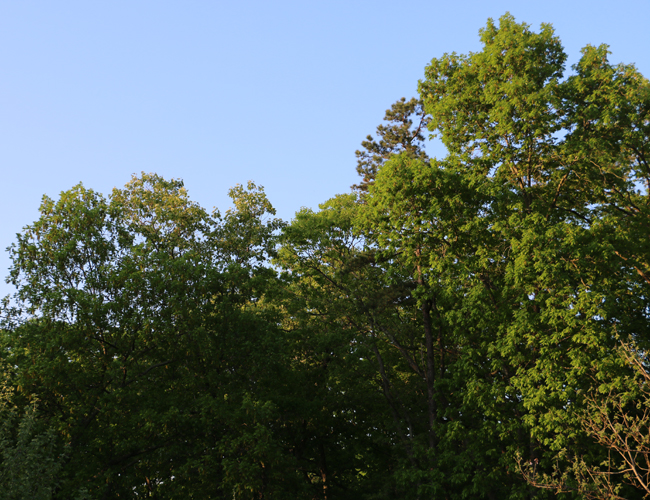
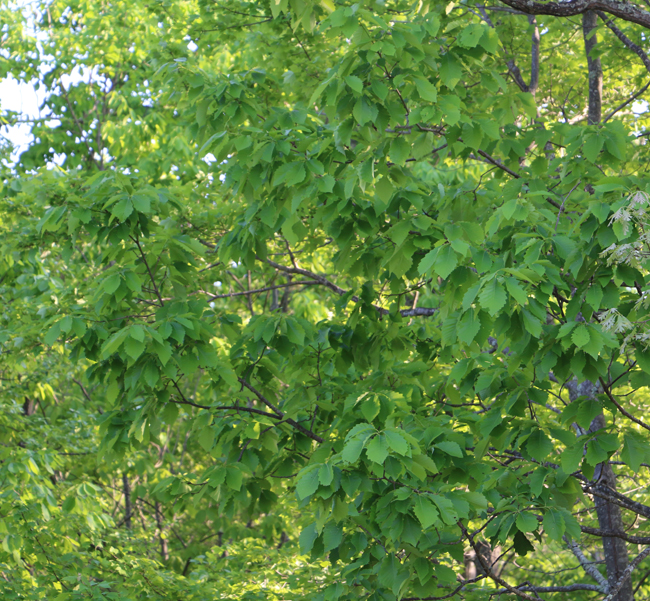
These eastern deciduous forests are busy gearing up for an astonishing feat: Together with their photosynthetic brethren across the northern hemisphere, they are getting ready to extract carbon dioxide (CO2) from the atmosphere and fuse it to water (H2O) pulled up through their roots to make glucose. In so doing, they disentangle atmospheric carbon from oxygen. They want the carbon, but they have no immediate need for the oxygen. There’s a surfeit of that stuff anyhow: they say, “Get rid of it!” Photosynthesis generates oxygen as a waste product, but it’s not the goal of the process. Inconsiderate plants dump it into the atmosphere without regard for how that reactive gas will impact other life on Earth (a bummer if you’re an anaerobic microbe, but it’s a major score for Animalia!).
The overall effect of this extraordinary ramping-up of photosynthetic activity can be seen in the concentration of the important atmospheric trace gas, CO2. Each boreal summer, its concentration drops by ~7 parts per million (ppm), drawn down by the greedy carbon-gulping of gazillions of green things: plants living on land and phytoplankton living in the water.
We can measure this effect. Examine the dashed red line in the graph below, from the CO2 monitoring station at Mauna Loa, a place far from huge concentrations of trees, as well as being remote from urban centers (that’s why they chose to stick the monitoring station there). Each year, the CO2 levels hit a high in the late boreal winter, and get drawn down to a minimum at the end of each boreal summer, when the trees are swollen with carbon extracted from the atmosphere, and seasonal photosynthesis draws to a close.
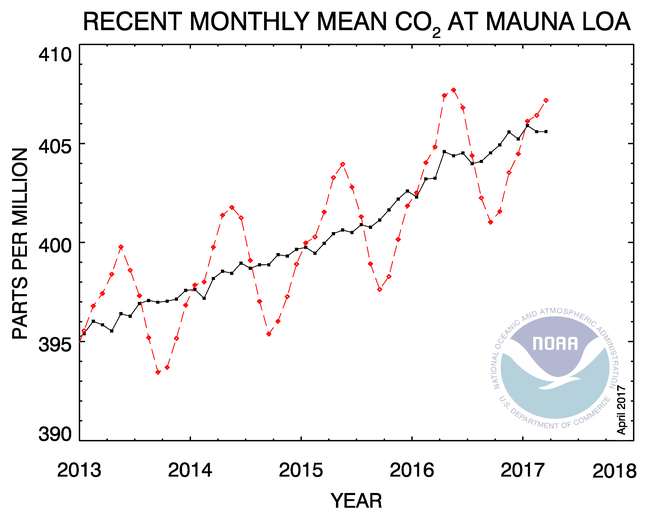
The black line in the graph shows what atmospheric CO2 levels would be if it weren’t for the seasonal cycle of photosynthesis turning on and turning off in the land-rich (and land-plant-rich) northern hemisphere. If there were no extra transfer of carbon from the Earth’s sedimentary rocks into the atmosphere, that black line wouldn’t have a slope; it would be horizontal on the graph. The further north you go, the further you are into the territory of the plants, and the greater the prominence of the seasonal signal. (if you click through to that graph, you’ll see that the range of seasonal variation is about 15 ppm at Point Barrow, Alaska, and about 1 ppm at the South Pole.)
As I gaze out on this sea of green, I marvel at the power of all these flappy green solar panels, these carbon sequestering units, each one responsible for yanking a handful of carbon atoms out of the atmospheric mix, sticking it down into the cellulose of the tree, where hopefully it will remain for some time. If not for this effect, there would be ~1% more CO2 in the atmosphere of the mid-latitudes, with the attendant heat-retention and ocean acidification properties for the planet. The summer trees in my yard save us from that!
Together with their green kin, they do what they can.
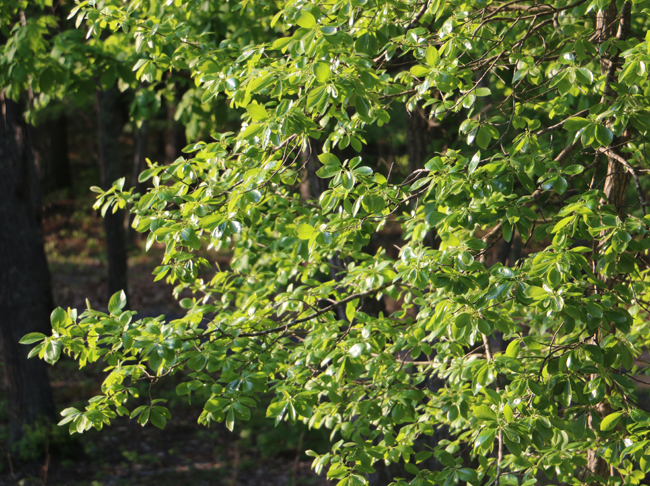

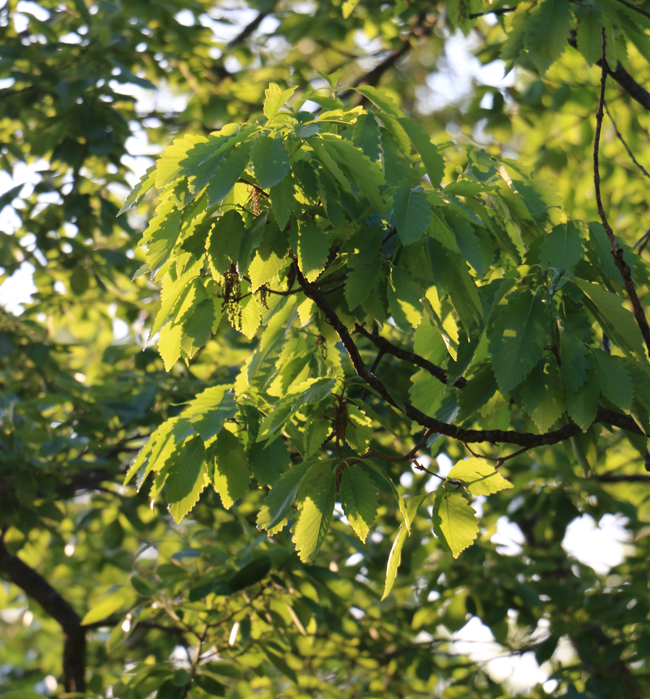
‘Tis the season for carbon sequestration here in North America. Gaze around you at the green gauze and contemplate the vital biogeochemistry at work.


 Callan Bentley is Associate Professor of Geology at Piedmont Virginia Community College in Charlottesville, Virginia. He is a Fellow of the Geological Society of America. For his work on this blog, the National Association of Geoscience Teachers recognized him with the James Shea Award. He has also won the Outstanding Faculty Award from the State Council on Higher Education in Virginia, and the Biggs Award for Excellence in Geoscience Teaching from the Geoscience Education Division of the Geological Society of America. In previous years, Callan served as a contributing editor at EARTH magazine, President of the Geological Society of Washington and President the Geo2YC division of NAGT.
Callan Bentley is Associate Professor of Geology at Piedmont Virginia Community College in Charlottesville, Virginia. He is a Fellow of the Geological Society of America. For his work on this blog, the National Association of Geoscience Teachers recognized him with the James Shea Award. He has also won the Outstanding Faculty Award from the State Council on Higher Education in Virginia, and the Biggs Award for Excellence in Geoscience Teaching from the Geoscience Education Division of the Geological Society of America. In previous years, Callan served as a contributing editor at EARTH magazine, President of the Geological Society of Washington and President the Geo2YC division of NAGT.